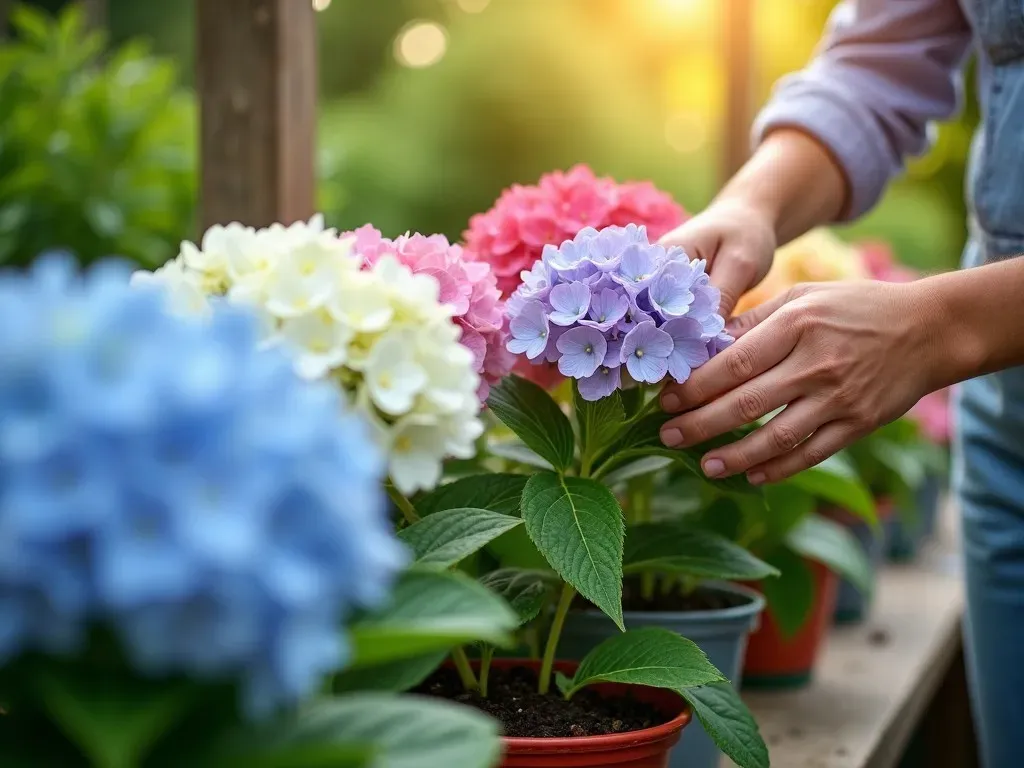Deadheading hydrangeas is an essential gardening practice that involves removing spent flowers to promote more flowering and maintain plant health. By understanding how to deadhead hydrangeas, you can enhance the overall beauty of your plants and encourage vibrant, lush blooms throughout the year.
Why Deadheading Hydrangeas Matters
Deadheading is vital because it directs the plant’s energy toward producing new blooms instead of seed production. This process not only keeps your hydrangeas looking tidy and vibrant but also helps in preventing diseases that might arise from decaying flowers. Regularly deadheading your hydrangeas contributes to a healthier plant, leading to prolonged flowering periods and enhanced aesthetic appeal in your landscape.
Benefits of Deadheading Hydrangeas
| Benefits | Description |
|---|---|
| Increased Blooms | Encourages the plant to produce more flowers. |
| Healthier Plants | Reduces the risk of disease and pest infestations. |
| Enhanced Aesthetics | Maintains a clean and manicured appearance. |
| Improved Growth | Promotes energy allocation toward new growth. |
hydrangea-Plants.webp" alt="Healthy Hydrangea Plants">
When to Deadhead Hydrangeas
Timing is crucial when it comes to deadheading hydrangeas. The optimal time to deadhead varies depending on the specific type of hydrangea you are dealing with, but generally, you can follow these guidelines:
-
Immediately After Flowering: For most hydrangeas, deadheading can be done right after the blooming season ends. This can help prepare the plant for the next growing cycle.
-
Late Winter or Early Spring: Some gardeners prefer to deadhead hydrangeas in late winter before the plant begins to bud in the spring. This method minimizes stress and allows you to clean up the plant effectively.
-
During the Blooming Season: For repeat-blooming varieties, it’s beneficial to deadhead throughout the growing season whenever spent flowers appear.
Signs It’s Time to Deadhead
- Brown or wilted blooms: The flowers begin to wilt and turn brown.
- Lack of new growth: If you notice fewer new flowers appearing, it may be time to prune.
- Diseased or damaged flowers: Any signs of rot or disease should be removed promptly.

Reference Video
Tools You’ll Need
To effectively deadhead hydrangeas, a few simple tools can facilitate the process:
- Pruning Shears: Ideal for cutting stems cleanly.
- Garden Gloves: Protects your hands from sharp edges or thorns.
- Hand Clipper: Useful for quick removals and precise cutting.
Steps to Deadhead Hydrangeas
- Identify Spent Blooms: Look for flowers that have faded or turned brown.
- Follow the Stem: For each spent flower, trace the stem down to the first set of healthy leaves or the first bud to determine where to cut.
- Make the Cut: Using clean, sharp pruning shears, cut the stem at a 45-degree angle. This promotes better healing.
- Clean Up: Remove debris and any diseased leaves from the area to prevent the spread of potential pests.

Differences Between types of hydrangeas
Not all hydrangeas require the same deadheading technique. Here are the two primary categories of hydrangeas and the specific approaches to take:
1. Old Wood Varieties
These varieties bloom on last year’s growth. They include:
- hydrangea macrophylla (Mophead and Lacecap)
- Hydrangea quercifolia (Oakleaf)
Deadheading Technique: Deadhead these after flowering in late summer to avoid cutting off next year’s buds.
2. New Wood Varieties
These bloom on new growth that develops in the current year. Varieties include:
- Hydrangea paniculata (Panicle)
- Hydrangea arborescens (Smooth)
Deadheading Technique: You can deadhead these types in late winter or early spring before new growth begins.
| Hydrangea Type | Flowering Type | Best Time to Deadhead |
|---|---|---|
| Old Wood Varieties | Last year’s growth | Late Summer |
| New Wood Varieties | Current year growth | Late Winter or Early Spring |

FAQs on Deadheading Hydrangeas
1. Should I deadhead hydrangeas?
Yes, deadheading encourages new growth and helps maintain the health of the plant by reducing the likelihood of disease.
2. When is the best time to deadhead hydrangeas?
The best time can vary; however, it is generally after flowering or before new growth begins in spring.
3. Do I need special tools for deadheading hydrangeas?
A pair of sharp pruning shears or scissors is recommended for clean cuts. Garden gloves are also advisable for protection.
4. What happens if I don’t deadhead?
If you neglect to deadhead, the plant may produce fewer blooms and become overrun with unsightly old flowers, which can harbor pests and diseases.
5. Can I deadhead hydrangeas in pots?
Yes, the same principles apply to hydrangeas grown in pots. Ensure you check for spent blooms regularly and deadhead as needed.

Conclusion
While the detailed process of deadheading hydrangeas may seem labor-intensive, the rewards are plentiful. Regularly practicing deadheading can lead to magnificent blooms and a vibrant garden that can be admired throughout the growing season. For more detailed guidance on Hydrangea Care, you can refer to Martha Stewart’s Guide on Deadheading Hydrangeas.
By consistently incorporating deadheading into your gardening regimen, you can transform your hydrangeas into stunning floral displays that catch the attention of everyone who walks by!


